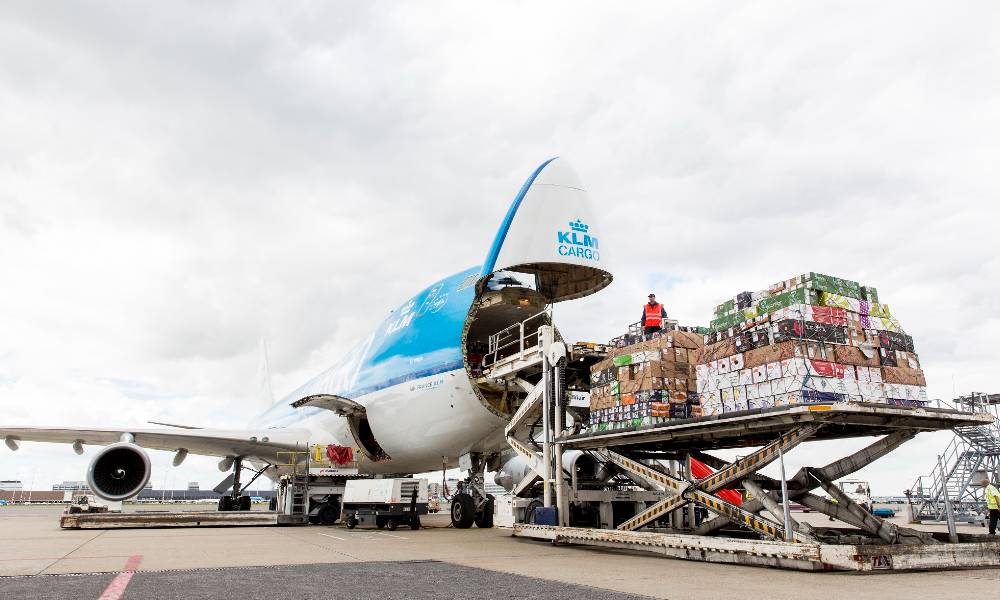
Three real solutions for shortage of air capacity for flowers
The Covid-19 pandemic has placed huge pressure on global flower supply chains and their air freight capacity. Jeroen van der Hulst of FlowerWatch offers three ways to turn this threat into an opportunity

The Covid-19 pandemic has placed huge pressure on global flower supply chains. One major challenge is a drop in air freight capacity due to the worldwide slowdown in travel and transport. Air freight capacity from Kenya, for example, has dropped by an estimated 25-30 percent. All around the world the picture is similar. We offer three ways for flower chains to turn a threat into an opportunity: optimized packaging; sea freight; and storage solutions. In all three areas, standardisation is the way forward.
1. Packaging optimization
Optimized and standardized packaging results in less damage and fewer rejects, while contributing to a longer average vase life, higher margins, and less packaging waste. It makes economic sense and it's also better for the planet. Today's air freight challenges make it more urgent than ever: with far fewer passenger flights, lower capacity, and even entire supply chain routes falling off the map, every pallet and kilogram of flowers that you can get on board to its destination matters.
From 1,500 kg per pallet to 2,200 kg
Our experience in supply and cold chain management for the flower industry has shown us that packaging in flower transportation, more often than not, is an underperformer. One of our customers used to ship two pallets a week of 1,500 kilos each. We helped them develop a better packaging solution, raising the pallet weight to between 2,000 and 2,200 kilos. In another case from our practice, we saw airplanes moving from 30 pallets or 3,000 kilos to 30 pallets or up to 3,400 kilos each. Given the current pressure on air freight capacity worldwide, this kind of packaging optimisation can make the difference between winning and losing.
.jpg?resize=600,360&ssl=1)
2. Sea freight
An obvious answer to reduced air freight capacity is to look for alternatives, such as sea freight. In some of the world's flower supply chains, sea freight is common, for example, much of Colombia's flower exports are sent by sea. On other routes, for example, between Kenya and Europe, the long distances can pose a challenge. If the cold chain management on these routes is below par, the challenge becomes a big problem: the exposure of flowers to too many degree hours causes damage and losses. If the cold chain is optimised, however, the challenge of time and distance becomes an opportunity. Players working with our proven cold chain standards benefit from guaranteed quality consistency and vase life extension.
3. Storage solutions
In some cases, certainly today, sea freight is still a bridge too far and reduced air freight remains a problem. In these situations, we advise flower businesses to integrate storage solutions in the supply chain. The current conditions are already causing forced storage today: reduced air freight capacity means a lot of flowers are spending a lot of time standing still on the journey from farm to florist. In an industry used to keeping its products constantly on the move all the way from farm to florist, this is a new situation. And with freight capacity down, the last thing you want is higher rejection percentages due to unplanned standstills in the supply chain. Our advice: anticipate standstills and prevent bottlenecking by creating healthy storage solutions along the way. As with sea freight, cold chain standards are a vital part of this: even minor exposure to higher-than-ideal temperatures - for example in a poorly cooled transit hall at the airport - can severely reduce vase life, increase reject percentages, and impact your margins. Our experience shows that solid storage solutions are often easier to implement and less costly than expected. The results: fewer hiccups in the supply chain, longer, and guaranteeable vase life, lower losses, higher margins.
Is your chain ready for Christmas, Valentine's, and other peak days?
In the run-up to Christmas, Valentine's, and Mother's Day, we strongly advise florists and retailers to make sure they have a good three weeks of flowers on stock to compensate for delays resulting from air freight capacity drops. Heydays aside, a five-day supply is becoming a basic necessity for surviving flight cancellations. In all of these situations, optimised packaging, sea freight, and standardised warehousing / storage solutions can help your company cross the line from struggler to achiever.
 Jeroen van der Hulst
Jeroen van der Hulst
Jeroen van der Hulst, a Dutch scientist and floriculture entrepreneur, is the founder of FlowerWatch, an organisation that is in the business of setting global standards in flower quality when they are transported from farm to super market. FlowerWatch works closely with flower growers, packaging companies and logistics service providers to ensure long life for flowers by implementing global standards which are both sustainable and profitable.

